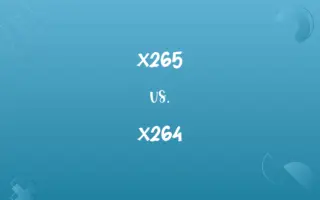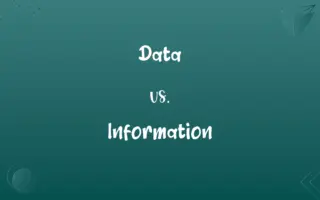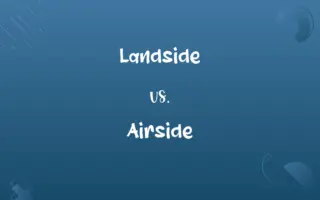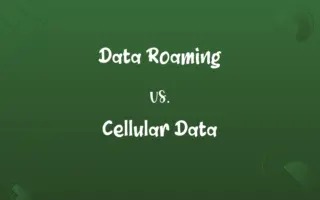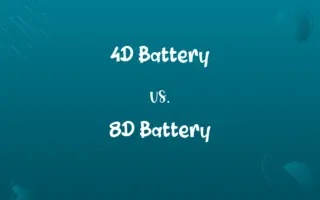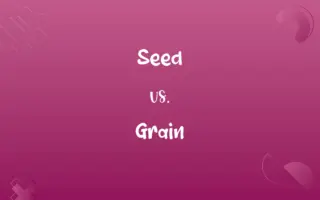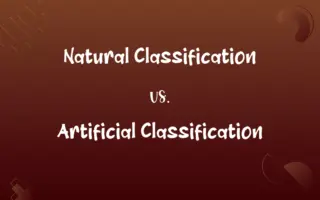Fork() vs. Vfork(): Know the Difference

By Shumaila Saeed || Updated on February 27, 2024
Fork() creates a new process by duplicating the parent process, while Vfork() creates a child process that shares the parent's memory space until it executes a new program.
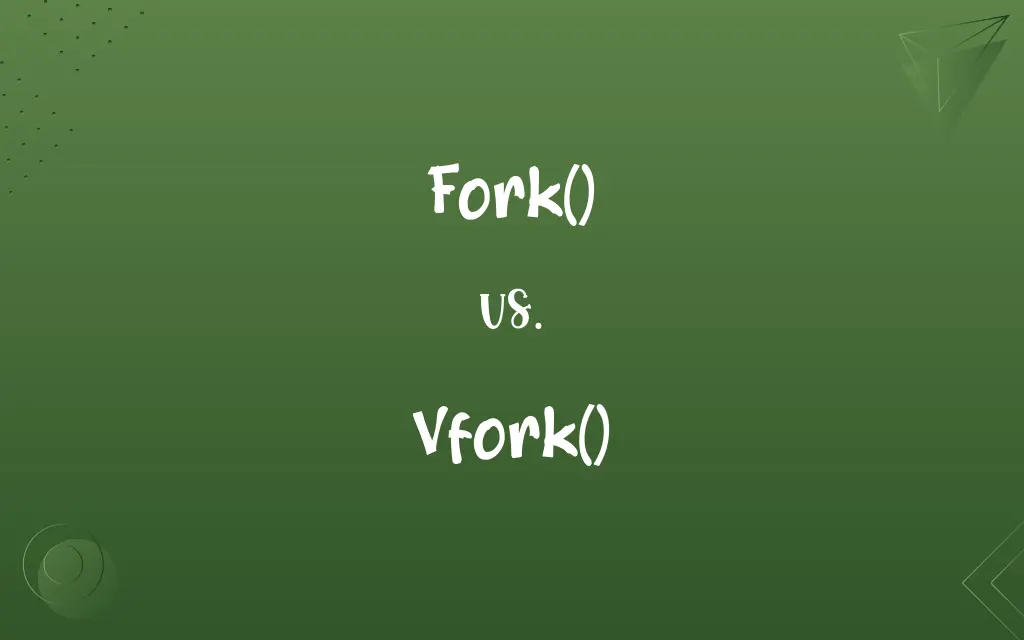
Key Differences
Fork() is a system call in Unix-like operating systems used to create a new process, known as a child process, which is a copy of the parent process. It duplicates the parent's memory and process environment. Vfork() is also used to create a child process, but unlike fork(), it doesn’t make a copy of the parent's memory space. Instead, the child process shares the parent's memory space until it either exits or calls exec() to execute another program.
Shumaila Saeed
Feb 25, 2024
When fork() is called, it creates a separate memory space for the child process. This ensures that the child process has an exact copy of all the memory segments of the parent process. In contrast, Vfork() is designed to be more efficient in situations where the child process doesn’t need a copy of the parent's memory, such as when immediately calling an exec() family function to execute a new program.
Shumaila Saeed
Feb 25, 2024
The fork() function is safer and more commonly used because it doesn’t create dependencies between the parent and child processes. The child process in fork() operates independently of the parent process. However, Vfork() was created to improve performance by avoiding the overhead of copying the entire memory space of the parent process. This can be beneficial in resource-constrained environments but poses risks since the parent and child share the same memory space.
Shumaila Saeed
Feb 25, 2024
In terms of resource usage, fork() can be more resource-intensive as it duplicates the parent process's memory, leading to more memory usage. On the other hand, Vfork() is a lightweight alternative, especially when the child process simply needs to execute a different program and doesn’t require the parent's memory space.
Shumaila Saeed
Feb 25, 2024
One major difference is that in fork(), the parent and child processes can be scheduled independently by the operating system. In Vfork(), however, the parent process is blocked until the child process either exits or executes a new program. This dependency in Vfork() must be carefully managed to avoid issues like deadlocks.
Shumaila Saeed
Feb 25, 2024
ADVERTISEMENT
Comparison Chart
Memory Space
Creates a copy of the parent’s memory
Shares the parent’s memory
Shumaila Saeed
Feb 25, 2024
Use Case
General purpose process creation
Efficient when immediately execing
Shumaila Saeed
Feb 25, 2024
Independence
Parent and child operate independently
Parent blocked until child exits/execs
Shumaila Saeed
Feb 25, 2024
ADVERTISEMENT
Fork() and Vfork() Definitions
Fork()
Fork() creates a new process by duplicating the current process.
“Using fork(), we created a child process for parallel task execution.”
Shumaila Saeed
Jan 24, 2024
Vfork()
Vfork() is designed for performance in memory-constrained systems.
“In our low-memory system, vfork() was chosen to minimize resource usage.”
Shumaila Saeed
Jan 24, 2024
Fork()
Fork() allocates separate memory space for the child process.
“The child process from fork() has its own memory, independent of the parent.”
Shumaila Saeed
Jan 24, 2024
Vfork()
Vfork() poses risks due to shared memory between parent and child.
“We avoided vfork() in critical applications due to its shared memory model.”
Shumaila Saeed
Jan 24, 2024
Fork()
Fork() returns twice, once in the parent and once in the child.
“In the fork() implementation, we checked the return value to differentiate parent from child.”
Shumaila Saeed
Jan 24, 2024
ADVERTISEMENT
Vfork()
Vfork() is efficient when the child immediately calls exec().
“We used vfork() because the child process needed to run a different executable.”
Shumaila Saeed
Jan 24, 2024
Fork()
Fork() is used for creating independent child processes.
“We used fork() to generate multiple independent processes for the server.”
Shumaila Saeed
Jan 24, 2024
Vfork()
Vfork() creates a child process that shares the parent's memory space.
“Vfork() was used to quickly create a child process for a new program execution.”
Shumaila Saeed
Jan 24, 2024
Fork()
Fork() is safer for creating processes that require isolation.
“For security reasons, we preferred fork() to ensure isolated execution environments.”
Shumaila Saeed
Jan 24, 2024
Vfork()
Vfork() suspends the parent process until the child exits or calls exec().
“After vfork(), the parent process waited until the child process executed its program.”
Shumaila Saeed
Jan 24, 2024
Repeatedly Asked Queries
How does fork() handle memory?
Fork() duplicates the parent’s memory space for the child process.
Shumaila Saeed
Feb 25, 2024
What does vfork() do?
Vfork() creates a new process that shares the same memory space as the parent process.
Shumaila Saeed
Feb 25, 2024
What is fork() in operating systems?
Fork() is a system call to create a new process, which is a copy of the calling process.
Shumaila Saeed
Feb 25, 2024
What is the return value of fork() and vfork()?
Both fork() and vfork() return the child’s PID to the parent and 0 to the child.
Shumaila Saeed
Feb 25, 2024
When is vfork() preferred?
Vfork() is preferred for efficiency, especially when the child process immediately executes a new program.
Shumaila Saeed
Feb 25, 2024
Can fork() and vfork() be used interchangeably?
Not always, as they have different behaviors and implications.
Shumaila Saeed
Feb 25, 2024
Why is fork() commonly used?
Fork() is used for its safety and independence between parent and child processes.
Shumaila Saeed
Feb 25, 2024
What are the risks of using vfork()?
Vfork() poses risks like deadlocks due to shared memory and parent process suspension.
Shumaila Saeed
Feb 25, 2024
Is fork() resource-intensive?
Yes, fork() can be resource-intensive due to memory duplication.
Shumaila Saeed
Feb 25, 2024
Can vfork() be used for complex process creation?
Vfork() is not ideal for complex process creation due to its shared memory model.
Shumaila Saeed
Feb 25, 2024
What safety measures are important with vfork()?
Avoiding changes to shared data and ensuring exec() or exit() is called promptly are key safety measures in vfork().
Shumaila Saeed
Feb 25, 2024
Does vfork() copy memory?
No, vfork() does not copy memory but shares the parent’s memory space.
Shumaila Saeed
Feb 25, 2024
How does the operating system schedule fork() and vfork() processes?
Fork() processes are scheduled independently, while in vfork() the parent is suspended until the child exits or calls exec().
Shumaila Saeed
Feb 25, 2024
Is vfork() still relevant today?
Vfork() is less relevant in modern systems with efficient fork() implementations.
Shumaila Saeed
Feb 25, 2024
What are the use cases for fork()?
Fork() is used for tasks requiring independent execution, like servers or parallel processing.
Shumaila Saeed
Feb 25, 2024
Is vfork() faster than fork()?
Vfork() can be faster due to less memory overhead, but it comes with greater risks.
Shumaila Saeed
Feb 25, 2024
How do modern systems optimize fork()?
Modern systems use techniques like copy-on-write (COW) to optimize fork().
Shumaila Saeed
Feb 25, 2024
What happens to the parent process in fork()?
In fork(), the parent process continues running independently of the child.
Shumaila Saeed
Feb 25, 2024
How do fork() and vfork() differ in exec() usage?
Vfork() is typically followed by exec(), as it doesn’t copy memory, whereas fork() can be used independently of exec().
Shumaila Saeed
Feb 25, 2024
Can fork() lead to memory wastage?
Fork() can lead to higher memory usage, which could be seen as wastage in certain contexts.
Shumaila Saeed
Feb 25, 2024
Share this page
Link for your blog / website
HTML
Link to share via messenger
About Author
Written by
Shumaila SaeedShumaila Saeed, an expert content creator with 6 years of experience, specializes in distilling complex topics into easily digestible comparisons, shining a light on the nuances that both inform and educate readers with clarity and accuracy.
